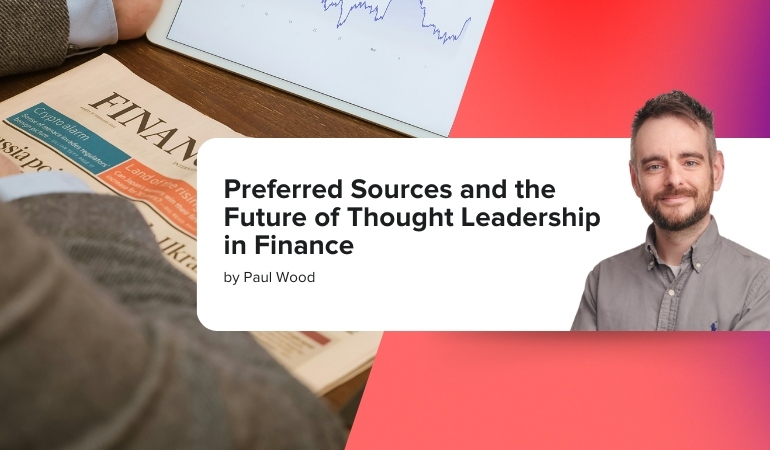Google’s latest feature launch, called Preferred Sources, is, on the face of it, a fairly simple tool to let users select a list of their preferred websites from which to receive their news.
I think, though, it’s a pretty interesting step into giving users control over the ‘implicit’ parts of a search result.
Let me explain…
Launching initially in the US and India, Preferred Sources lets users specify an unlimited number of content sources. The list is then used within Google’s Top Stories feature, where content from the selected sources will be prioritised and displayed more prominently.
The Preferred Sources feature will also determine the contents of a ‘from your sources’ resource when Google displays relevant results.
Users will continue to see news and articles from other websites, but this is a move towards managed personalisation in search. Early testing carried out by Google suggests that over half of those using this new feature select four or more preferred sources.
What it could mean
There are two parts to any piece of information:
- Explicit - the ‘what’
- Implicit - the ‘who’
The explicit is the content itself, what the article says, and how it says it.
The implicit is the context; that means credibility and motives behind the source.
To demonstrate what I’m referring to, imagine a study into the effects of smoking; research findings funded by a tobacco company versus a study funded by an independent organisation have very different value, regardless of what they say.
Preferred Sources is a small, but I believe interesting, attempt to let users curate for the implicit value of pieces of information.
Why it matters now
I think the timing tells us a lot as well. For the first time in history, thanks to the marvel of generative AI at scale, information sources (Google being the main player) can move beyond a list of links and towards a summary of information, repurposed from multiple sources.
Generative AI means Google is no longer just pointing us to sources, it’s synthesising them. That makes the ‘what’ louder, but risks drowning out the ‘who.’ Preferred Sources rebalances that.
In a world of exposure to a potentially limitless fountain of information, it allows users to draw some boundaries for their own ‘safe zone’.
It’s early days, Preferred Sources is limited to two locations (US and India) and is used only as part of the Top Stories feature in Google Search; ie, for timely news.
I believe, though, that this type of feature will become more common across more sources.
Implications for brands
Interestingly, Google’s announcement also spoke directly to publishers, inviting them to install an ‘add as a preferred source on Google’ button on their websites.
For publishers (news sites, etc), the attraction is obvious; the more people who select you as a preferred source, the more eyes you get on your content.
It’s also interesting, though, for sites that happen to publish newsworthy information as a part of their normal activity.
In the finance industry, where our focus lies, fund managers publish regular market commentary, law firms publish industry briefings, banks publish consumer trend reports, regulators publish consultation papers, fintech platforms publish consumer research, the list goes on.
In our industry, becoming a ‘preferred source’ for the mass market is neither realistic nor particularly useful; however, if your commentary, insights, or reports become part of your niche audience’s curated ‘safe zone,’ you’re not just another link in search results; you’re a preferred voice.
The future
This all ties back to what I called the ‘responsive information’ model I wrote about a few weeks ago. I believe we’re moving to a world where information will exist outside the confines of format.
Users are going to be increasingly exposed to information that is a collage of snippets from multiple sources; the ‘explicit’ content will be made stronger, the ‘implicit’ context will be blurred.
I believe Preferred Sources is just the first iteration of a growing move toward source curation resources, and brands should endeavour to become a part of their audiences’ ‘safe zone’.





